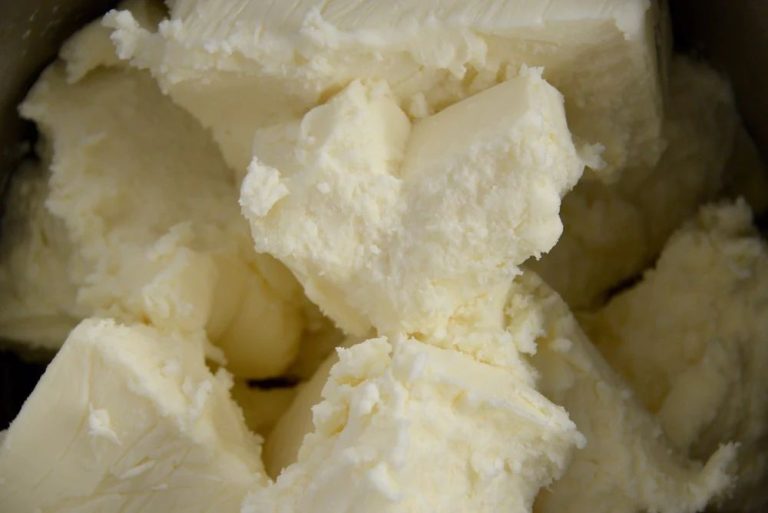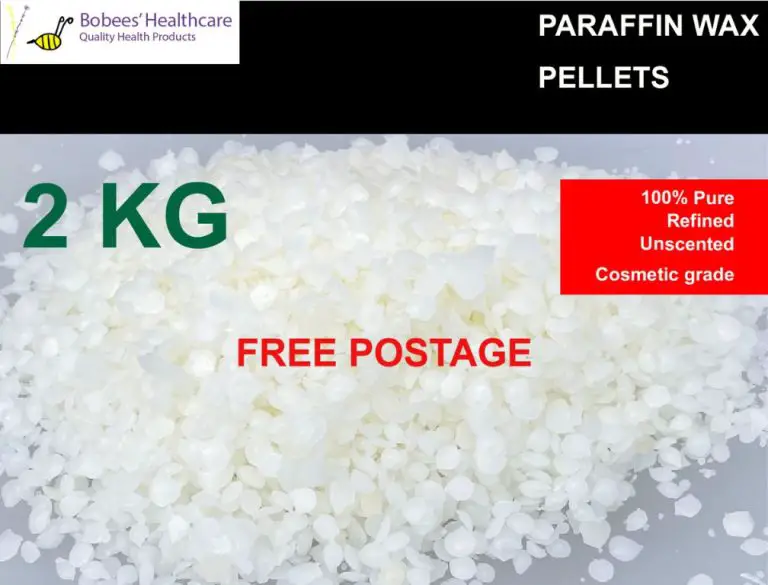Is 100% Soy Wax Safe?
What is Soy Wax?
Soy wax is a vegetable wax made from the oil of soybeans. After harvesting, the beans are cleaned, cracked, de-hulled, and rolled into flakes (Source: https://www.candlescience.com/learning/what-is-soy-wax/). The oil is extracted from these flakes and then hydrogenated, converting it into a solid wax. Soy wax is an alternative to paraffin wax, which is a petroleum-based wax.
The chemical composition of soy wax gives it a different structure compared to paraffin wax. Soy wax is made up of hydrogenated soybean oil, while paraffin wax contains hydrocarbons. Despite their different chemical makeups, both can be used to make candles. Soy wax is considered a cleaner burning, renewable and environmentally-friendly alternative to paraffin.
Is Soy Wax Toxic?
Soy wax is generally not considered toxic for humans. It is made from hydrogenated soybean oil and does not contain any artificial dyes or fragrances. When burned, soy wax releases far fewer harmful chemicals compared to paraffin wax, which is a petroleum-based product.
According to research by the National Candle Association, paraffin wax candles release chemicals like toluene and benzene into the air when burned, which can be toxic if inhaled over long periods of time. Soy wax candles release up to 86% less soot than paraffin candles, resulting in less indoor air pollution.
One study showed that burning soy candles produced significantly lower emissions of formaldehyde and acetaldehyde compared to paraffin candles. Both of these compounds are classified as known human carcinogens by the EPA.
While no candle wax is completely non-toxic, soy wax is considered a less hazardous option than paraffin in terms of potential health risks. When burned properly and occasionally, soy candles do not pose significant toxic threats to human health.
Is Soy Wax Safe for Humans?
Soy wax is generally considered safe for human use and non-toxic compared to paraffin wax candles. Soy wax is made from hydrogenated soybean oil and contains no artificial ingredients or harmful chemicals (source:https://www.wholesomehub.net.au/blog/which-candles-are-safe-for-your-health). When burned, soy wax candles release little to no soot or smoke, making them better for indoor air quality compared to paraffin candles. The natural soy wax itself and the soy scent oils used are non-toxic and all-natural ingredients.
Research shows soy wax candles do not emit benzene, toluene or other hazardous chemicals like paraffin candles often do. The hydrogenation process soybean oil goes through to create soy wax eliminates the allergenic proteins found in soybean oil as well. This makes soy wax hypoallergenic and unlikely to cause allergic reactions (https://www.happyflame.com.au/pages/why-not-soy-candles). Overall, soy wax itself and soy wax candles are considered non-toxic and safe for humans when used properly.
Is Soy Wax Safe for Candles?
100% soy wax candles are generally considered a safe and natural alternative to paraffin candles. Paraffin wax is derived from petroleum, while soy wax is made from soybeans. According to Pantry Fuel, soy candles emit less toxic soot and burn cleaner than paraffin candles (https://pantryfuel.com/blogs/blog/why-we-will-never-burn-soy-candles-again). The natural soy wax contains no dyes, fragrances or other additives that could release toxins when burned. Compared to paraffin, soy wax also has a lower melting point, which reduces the risk of accidental fires if the candle tips over.
However, any candle can produce some soot and release particulates into the air when burning, regardless of wax type. Properly tending to soy candles by trimming wicks and providing good ventilation can minimize risks. Those sensitive to fragrances may still react to essential oils or scents added to soy wax. But overall, choosing products made with 100% soy wax is an environmentally-friendly option that poses fewer health hazards than paraffin in terms of indoor air quality.
Is Soy Wax Safe for Skin?
Soy wax is often used in skin care products as an alternative to paraffin wax because it is considered less irritating for the skin. Soy wax contains vitamin E, which acts as an antioxidant and has moisturizing properties. When pure and unscented, soy wax is generally considered safe for topical use on skin.
According to Scented Designs Candles, soy wax can be used as a natural moisturizer because it is rich in vitamin E. The skin benefits of soy wax come from its composition – since it’s made from the oil of soybeans, it contains fatty acids and proteins that can help hydrate and nourish skin. Soy wax is also hypoallergenic, making it less likely to cause skin irritation or allergic reactions compared to ingredients like paraffin wax or essential oils.
Using Your Soy Candle as a Skin Lotion explains that you can safely rub small amounts of melted soy wax directly onto your skin after extinguishing a soy candle. Allowing the wax to solidify provides a thin protective layer that locks in moisture. Soy wax should not be used in large amounts, as this could clog pores. Properly cleaning the skin after will remove any excess wax.
Is Soy Wax Environmentally Friendly?

Soy wax is considered more environmentally friendly than paraffin wax for a few key reasons:
It is biodegradable and renewable. Soy wax is made from soybean oil, which is a renewable resource that can be replanted year after year. Soy wax will biodegrade over time, unlike paraffin wax which is a petroleum product and not biodegradable (source: https://waxkind.co.uk/blogs/news/is-soy-wax-really-eco-friendly).
It provides a more sustainable alternative to paraffin wax, which is made from non-renewable fossil fuels. Using soy wax reduces reliance on petroleum-based products (source: https://waxkind.co.uk/blogs/news/is-soy-wax-really-eco-friendly).
The production of soy wax requires less energy than paraffin wax production. This leads to lower carbon emissions overall (source: https://waxkind.co.uk/blogs/news/is-soy-wax-really-eco-friendly).
Is Soy Wax Non-Toxic for Pets?
Soy wax is generally considered safe for pets like dogs and cats. According to Harlem Candle Company, most candle waxes, including soy wax, are not toxic to dogs if ingested in small amounts [1]. Mountain City Candles also states that soy wax itself is non-toxic and safe for pets [2]. The wax is made from soybeans, a food product, so ingesting small amounts is not harmful.
However, other components of candles like wicks, fragrances, and colorants may be problematic. Large chunks of wax can also pose a choking hazard. So while plain soy wax is considered non-toxic, pets should still be supervised around burning candles.
Potential Drawbacks of Soy Wax
While soy wax candles have gained popularity for their natural ingredients and eco-friendly reputation, they aren’t without some potential drawbacks compared to paraffin wax candles.
One potential drawback of soy wax is its lower melting point compared to paraffin wax. Paraffin wax melts at around 130 to 150 degrees Fahrenheit, while soy wax melts at a lower temperature of 115 to 125 degrees Fahrenheit (https://happypiranha.com/pages/why-we-dont-use-soy-wax). This means soy wax candles are more prone to melting in warmer environments or developing sinkholes on the surface as the wax melts unevenly.
Another commonly cited disadvantage of soy wax is that it may not retain scent as effectively as paraffin wax. The natural soy wax itself has little to no scent. Fragrance oils can be added for soy candles, but some find the scent from soy wax candles does not fill a room or linger as long as candles made from paraffin wax (https://www.everythingdawn.com/blogs/news/34785665-the-pros-and-cons-of-soy-wax). The lower melting point of soy wax compared to paraffin is believed to contribute to soy retaining fragrances for a shorter time.
While soy wax has its advantages, these potential drawbacks are worth being aware of when choosing between soy wax versus paraffin wax candles. Testing different soy wax candle brands and wick types can help identify products that maximize soy’s benefits while minimizing its disadvantages.
Soy Wax vs. Beeswax
Soy wax and beeswax are two popular natural waxes used in candle making. They each have their own unique properties and advantages.
Beeswax is secreted by honey bees to build the walls of their honeycomb. It has a sweet, honey-like scent and burns brighter than soy wax. Beeswax is also harder than soy wax, so it can hold intricate candle designs. However, beeswax is more expensive since it needs to be harvested from bee hives. It also burns faster than soy wax.
Soy wax is made from hydrogenated soybean oil. It has very little scent and burns slower and cleaner than beeswax. Soy wax blends and adheres well to container walls, making it a good choice for container candles. It’s also readily available and affordable. However, soy wax is softer than beeswax, so it may not hold complex designs as well. It also does not release scent as effectively as beeswax.[1] [2]
In summary, beeswax produces brighter, better smelling candles, but is more expensive. Soy wax is affordable and has a clean burn, but may not be as effective for certain candle designs. The choice between the two waxes depends on the specific needs and budget of the candle maker.
The Bottom Line
After reviewing the safety of soy wax for candles, skin, pets and more, we can conclude that 100% soy wax is generally considered safe. Made from soybeans, soy wax is a renewable and environmentally-friendly alternative to paraffin wax. Studies show that soy wax burns cleanly without producing the soot or toxins that paraffin candles can emit. Soy wax is also non-toxic, biodegradable and vegan-friendly.
When used in candles, soy wax burns slower and cooler than paraffin, reducing risk of fire and making it a safer option. Soy wax is gentle on skin and does not pose health risks for pets when ingested. While no candle wax is 100% risk-free, high-quality 100% soy candles made with cotton wicks are an excellent non-toxic alternative for home use.
Overall, choosing soy wax over paraffin wax reduces your exposure to pollutants and potential toxins. With proper care and precautions, soy wax candles and products can be safely enjoyed by all.





